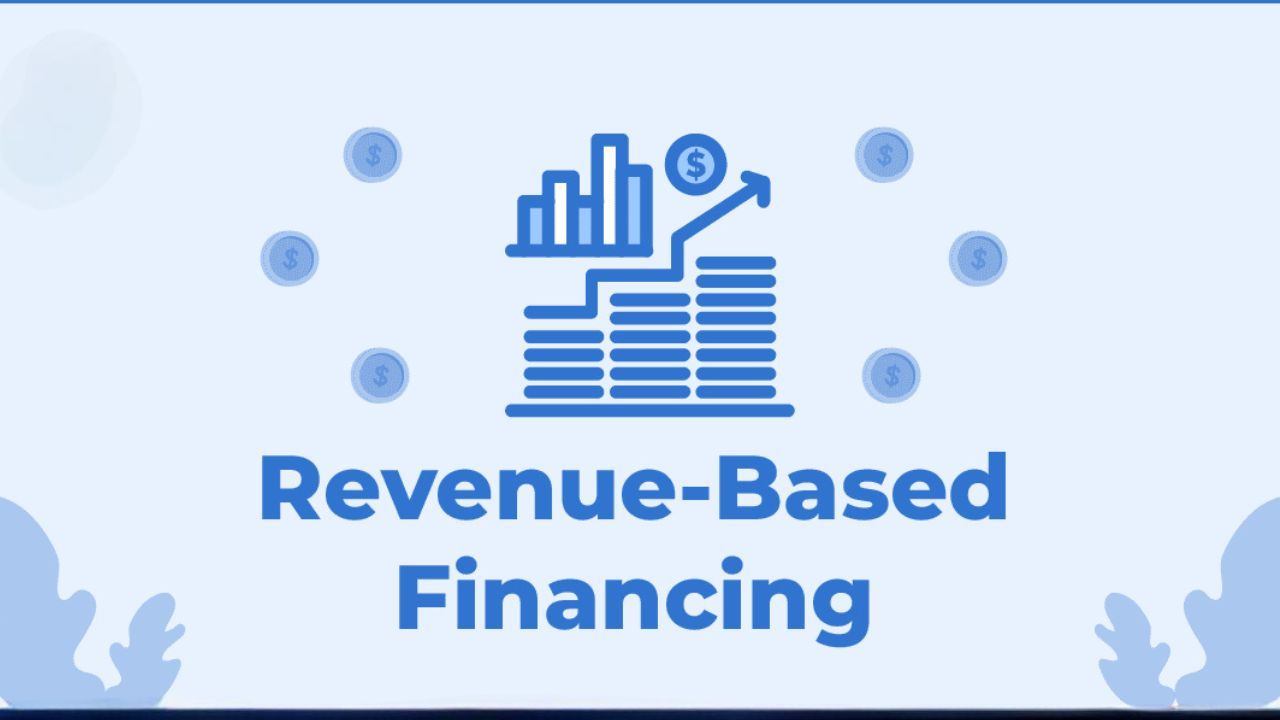- Revenue-based financing (RBF) is an innovative and flexible funding option for businesses that allows companies to raise capital without giving up equity or taking on significant debt. This method has become popular among startups and growing companies, particularly in sectors like technology, e-commerce, and SaaS (Software as a Service). Let's explore revenue-based financing, how it compares to other forms of financing, how it works, and its relation to revenue bonds.
What is Revenue-Based Financing?
- Revenue-based financing is a funding model in which investors provide capital to a business in exchange for a percentage of its future revenues. Instead of regular monthly payments like in traditional loans, the business makes payments based on a fixed percentage of its monthly or quarterly revenues. This makes RBF highly flexible since the repayment amounts vary according to how well the business performs.
Key Features of Revenue-Based Financing:
- No Fixed Installments: The payments are tied to your revenue, which means when your sales are low, your payments are also lower.
- No Equity Dilution: Unlike venture capital, you don’t need to give up a portion of your business.
- Fast and Simple Process: RBF agreements are usually quicker to close than traditional loans or equity investments.
- Repayment Flexibility: Businesses pay more during high-revenue months and less when revenues are lower.
Revenue-Based Financing vs. Debt and Equity-Based Financing:
Revenue-based financing is often compared with debt and equity-based financing. Here's a breakdown of how it stacks up against these more traditional funding options.
- Debt-Based Financing: In debt financing, businesses borrow money and repay it over time, with added interest. The repayment schedule is usually fixed, and missing payments can hurt your credit or lead to penalties.
- RBF Advantage: Unlike debt, RBF does not impose fixed repayment schedules, making it easier for businesses with fluctuating revenues to manage payments.
- RBF Disadvantage: The total repayment in RBF can sometimes be higher than traditional loans due to variable revenue and the flexible structure.
- Equity-Based Financing: Equity financing involves selling shares of your business to raise capital. The main benefit is you don't have to repay the money, but you lose a portion of ownership and control in the process.
- RBF Advantage: RBF doesn’t require giving up ownership, so founders retain full control of their business.
- RBF Disadvantage: RBF doesn’t provide as much capital upfront as equity funding and can lead to higher repayment amounts in high-growth scenarios.
Revenue-Based Financing and Revenue Bonds:
Revenue-based financing and revenue bonds sound similar but operate very differently. Here’s how they differ:
Revenue-Based Financing:
- Used by businesses to raise capital from investors in exchange for a percentage of future revenue.
- Typically used by startups, small businesses, or companies with recurring revenues like SaaS.
Revenue Bonds:
- Revenue bonds are issued by municipalities or public authorities to fund public projects like highways, bridges, or airports. They are backed by the revenue generated from the project being funded.
- Investors in revenue bonds earn returns based on the income generated by the public project rather than a company’s revenue.
Key Differences:
- Purpose: RBF is aimed at business financing, whereas revenue bonds are for public infrastructure projects.
- Repayment: RBF repayments fluctuate with company revenue, while revenue bonds are repaid based on project revenue.
How Does Revenue-Based Financing Work?
Revenue-based financing follows a straightforward process, and its flexibility is what makes it an attractive option for many businesses. Here’s a step-by-step look at how RBF works:
Application and Approval:
- A business applies for RBF by submitting its financial details, especially its revenue data. Investors then assess the company’s revenue stream to determine whether it’s a good fit for RBF.
- The approval process is often quicker than traditional loans, sometimes taking only a few days.
Receiving Capital:
- Once approved, the business receives a lump sum of capital. This amount is generally between 2 to 5 times the company’s monthly revenue. For example, if a company earns Rs. 50,000 per month, it might qualify for Rs. 100,000 to Rs. 250,000 in funding.
Repayment Structure:
- The business agrees to pay a percentage of its revenue (usually between 3% to 10%) until a pre-agreed repayment cap is reached. For example, if you receive Rs. 100,000 with a repayment cap of 1.5x, you will need to repay Rs. 150,000 over time.
- Payments fluctuate based on revenue. For example, if your revenue is Rs. 50,000 in one month and you agreed to pay 5%, you would pay Rs. 2,500 that month. In a slower month where you earn Rs. 20,000, your payment would drop to Rs. 1,000.
Completion:
- The funding cycle is complete when the business has repaid the full amount (the original investment plus a profit for the investor). There’s no set timeline for this, as the repayment schedule depends on the company's revenue.
Conclusion:
- Revenue-based financing offers a unique and flexible funding alternative, especially for growing businesses with recurring revenues but without the desire to give up equity or take on heavy debt. Its repayment terms are closely tied to business performance, which can be beneficial in fluctuating markets or for companies in growth phases. However, it’s important to evaluate the total cost of this type of financing compared to traditional loans or equity investments.
- RBF can be the right choice for businesses with predictable revenue streams, such as subscription-based companies or e-commerce businesses, that want to avoid fixed loan payments and equity dilution.
Frequently Asked Questions:
What is an example of revenue-based financing?
- An example of revenue-based financing is when a SaaS (Software as a Service) company receives Rs. 100,000 in funding from investors in exchange for 5% of the company’s monthly revenue. The company continues to make payments until they repay a predetermined amount, typically 1.5 to 3 times the original investment, depending on the agreement. The payments fluctuate based on the company's monthly revenue.
What are the use cases for revenue-based financing?
- Typical use cases for revenue-based financing (RBF) include helping startups accelerate growth, extend their financial runway, or optimize their capital structure. By using RBF, startups can access future revenues upfront, enabling them to meet immediate cash flow needs without sacrificing equity or taking on traditional debt. This method is particularly useful for funding marketing campaigns, expanding teams, or developing new products while maintaining flexibility in repayment based on actual revenue performance.
What are the disadvantages of revenue-based financing?
- The disadvantages of revenue-based financing include potentially higher overall costs compared to traditional loans, as repayment amounts depend on a company's revenue. If the business grows quickly, the total repayment can exceed initial expectations. Additionally, RBF is usually only available to companies with consistent and predictable revenue streams, limiting its accessibility for early-stage or irregular-revenue businesses.
Who can benefit from revenue-based financing?
- Companies with recurring revenue models, such as SaaS, e-commerce, and subscription businesses, benefit most from RBF. However, it can also work for other businesses that have stable and predictable cash flows.
How is revenue-based financing different from venture capital?
- In venture capital, you give up equity in exchange for funding, whereas in RBF, you retain full ownership of your business. RBF also does not come with board seats or control over business decisions.
What are the typical interest rates for revenue-based financing?
- RBF doesn’t have traditional interest rates. Instead, businesses repay a percentage of their revenue until a repayment cap is reached. The total cost can vary depending on how quickly the business repays the investment.
Can startups use revenue-based financing?
- Yes, startups with predictable and consistent revenues are ideal candidates for RBF. Investors will typically look for companies that have been generating revenue for at least a few months.
Is there a limit to how much I can raise through RBF?
- The amount you can raise through RBF is generally linked to your company’s monthly revenue. Most investors offer between 2 to 5 times your monthly revenue.
What happens if my revenue decreases?
- One of the biggest advantages of RBF is the flexibility of payments. If your revenue decreases, your payments decrease as well. This ensures that you won’t be overburdened by fixed payments during tough times.
What are the risks of revenue-based financing?
- The main risk is that the total repayment can end up being higher than a traditional loan, especially for fast-growing businesses. Also, if revenues are low for an extended period, the repayment period could stretch out longer than anticipated.
How quickly can I receive funding through RBF?
- The approval and funding process is generally faster than traditional loans, often taking just a few days to a couple of weeks.
Do I need a high credit score to qualify for revenue-based financing?
- RBF focuses more on the company's revenue streams and less on the personal credit score of the business owner. While having a good credit score can help, it's not as critical as it is in traditional lending.
Is revenue-based financing suitable for long-term growth?
- RBF is better suited for short-to-medium term financing needs. If you’re looking for significant capital to fuel long-term growth, venture capital or equity financing might be better options.
We hope that you like this content and for more such content Please follow us on our social site and YouTube and subscribe to our website.
Manage your business cash flows and payable/receivables using our Bahi Khata App


